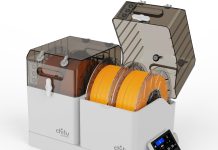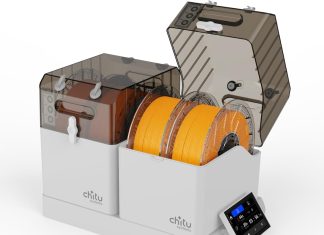3D printing has revolutionized the way we create prototypes and models, allowing for intricate designs with precision and ease. However, like any technology, it comes with its set of challenges. The Anycubic M7 Pro resin printer is known for its reliability and high-quality outputs, but even the best printers can experience issues. In this article, we’ll discuss common problems that users may face with the Anycubic M7 Pro resin profile and how to troubleshoot them effectively.
Understanding Resin Printing
Before diving into troubleshooting, it’s important to understand that resin printers operate differently than filament-based printers. They use a light source to cure liquid resin layer by layer, which can lead to unique problems compared to traditional FDM (Fused Deposition Modeling) printers. Common issues often arise from misconfigurations in the resin profile settings, environmental factors, or hardware limitations.
Common Issues and Troubleshooting Tips
1. Incomplete Prints or Missing Layers
Symptoms:
You may notice parts of your model are missing, or certain layers did not print.
Troubleshooting Steps:
- Check Exposure Time: If layers are not curing properly, the exposure time may be too low. Increase the exposure time incrementally and test print to find the optimal setting.
- Inspect the LCD Screen: If the screen is damaged or dirty, it may not be transmitting light effectively. Clean the screen gently or replace it if necessary.
- Level the Build Plate: Ensure that your build plate is level and adequately calibrated. An uneven build plate can lead to inconsistent layer adhesion.
2. Prints Have Surface Defects
Symptoms:
Your prints appear rough, have pockmarks, or other surface defects.
Troubleshooting Steps:
- Resin Quality: Make sure you are using high-quality resin. Cheap or old resins may lead to poor print quality. Always store resin in a cool, dark place to prolong its shelf life.
- Adjust Layer Thickness: Try reducing the layer thickness. Thinner layers can sometimes resolve surface issues and improve detail.
- Anti-aliasing Settings: Enable anti-aliasing in your slicer settings, which can help smooth out jagged edges and provide a finer finish.
3. Sticking Issues – Prints Not Detaching
Symptoms:
Printed models become stuck to the build plate, causing damage upon removal.
Troubleshooting Steps:
- Release Film: Ensure that any release film or FEP film in the vat is in good condition. Replace any worn-out films to facilitate easier detachment.
- Platform Preparation: Try applying a thin layer of release agent or cleaning the build plate with isopropyl alcohol to enhance adhesion properties.
- Adjust Base Layer Settings: If prints are not detaching, consider adjusting the exposure time for the base layers. A longer base layer exposure may help.
4. Overexposure Leading to Loss of Detail
Symptoms:
Fine details of your model get lost due to excessive exposure.
Troubleshooting Steps:
- Reduce Light Exposure Settings: If you notice a general washout of details, consider lowering your exposure settings. Test with different settings to find the sweet spot.
- Check for Proper Lifting Speed: Ensure that the lifting speed of the build plate is set appropriately. Too fast of a lift can cause uncured resin to stick, while too slow of a lift can lead to overexposure.
5. Resin Oozing or Dripping
Symptoms:
Liquid resin may be leaking from the vat during printing.
Troubleshooting Steps:
- Tighten Vat Screws: Ensure that your vat is correctly secured and that all screws are tightened. A loose vat can lead to leaks.
- Use a Proper Sealing Technique: If your vat is still leaking, consider using a silicone sealant to create an airtight barrier.
- Monitor Temperature: Extreme temperatures can affect resin behavior. Ensure your printing environment remains stable, ideally between 20-25°C (68-77°F).
Final Thoughts
Debugging prints on the Anycubic M7 Pro resin printer involves a mix of understanding the printer’s mechanics and fine-tuning your resin profile settings. While troubleshooting may require some trial and error, the satisfaction of achieving a perfect print can make it all worthwhile. Keep in mind that regular maintenance, calibration, and utilizing high-quality materials go a long way in minimizing issues. Happy printing!






